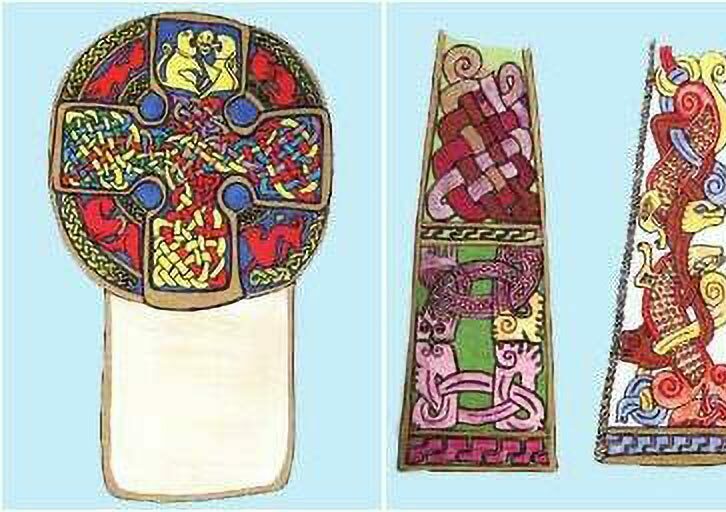About
Site Directory
Copyright © 2025 www.isleofman.com
All Right Reserved
powered by 
Copyright © 2025 www.isleofman.com
All Right Reserved
powered by 


(Pictured top left)
Height: 4'4"
Width: 3' 2"
The Kirk Braddan Wheel Cross is very interesting, possibly depicting Daniel in the lions' den. It is only one of two Manx crosses that depicts a Biblical subject.
The remainder of the equal-limbed cross is decorated with very fine plaitwork. The outer circles are also covered by plaits of three, four and six, respectively.
(Pictured top right)
Unfortunately only half of this very ornate cross has been found. The carving is outstanding, consisting of two beautiful interlaced head to head pelleted dragons with the bodies ending in spirals.
On the reverse side are more excellent carvings showing spirals, pellets and a plait of seven.
On one edge is a plain step-pattern and on the other the Runes which read as follows:
UTR: RISTI: KRUS: pONO: AFT: FRO (KA: FApURSIN: IN pU ...)
"ODD RAISED THIS CROSS TO THE MEMORY OF HIS FATHER FRAKKI BUT THOR"
Height: 84"
Width: 9"
Depth: 6"
This cross differs from all other Manx crosses, as rather than consisting of a relatively thin slab of carved stone, it is in the shape of a four sided pillar.
In 1907 P.M.C. Kermode described it as "the perfect example of a 'Celtic' cross", and this is the shape of many of the War Memorials found around the island.
Three sides of the shaft feature decorative, interlaced dragons, whilst the remaining side carries a runic inscription:
THORLEIF HNAKKI ERECTED THIS CROSS TO THE MEMORY OF FIAC HIS SON, BROTHER'S SON TO HAFR.
Interestingly, the name of the dead youth is Celtic, but those of his father and uncle are Norse. Perhaps Fiac was a first generation Manxman with a Celtic mother.
Mrs Richards notes that:
"Thorleif's Cross is an outstanding example of the combination of a Celtic cross with purely Scandinavian ornamentation.
"On one side are four interlaced pelleted dragons. The other side has three interlaced and one separated dragon, which runs down the full length of the edge. They are a marvellous mixture of interlacings and spirals.
"The cross is fine blue slate, possibly from Spanish Head in the south of the Island."